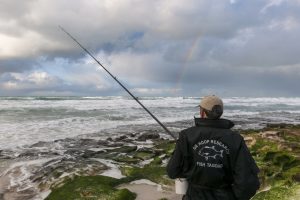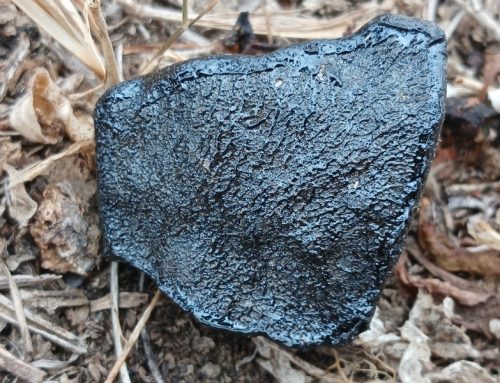 Nobody is better at managing fish stocks than those who actually catch fish. This is what it says on CatchReport, launched in October 2016, where recreational anglers voluntarily contribute to conserving South Africa’s fish stocks and oceans by adding and sharing their catch data. CatchReport is housed on the FishforLife website (www.FishforLife.co.za).
Nobody is better at managing fish stocks than those who actually catch fish. This is what it says on CatchReport, launched in October 2016, where recreational anglers voluntarily contribute to conserving South Africa’s fish stocks and oceans by adding and sharing their catch data. CatchReport is housed on the FishforLife website (www.FishforLife.co.za).
This is such an innovative approach to marine conservation, considering that there are approximately 2,5 million active recreational anglers in South Africa from every socioeconomic, age and gender group. The definition of recreational angling ranges from catching fish for supper from the shore to catching off ski boats or with spear guns.
The mobile-friendly website that is free for all to use is a fascinating resource that will also contribute to the broader public’s understanding and appreciation of marine biodiversity.
‘It is an easy-to-use, accessible website, and current information on fish and marine species conservation status, angling good practice, interesting conservation information and marine news is disseminated on the website,’ says South African National Biodiversity Institute (SANBI) Marine Programme Manager, Kerry Sink, who conceptualised the FishforLife platform.
Developed as a collaboration between SANBI, WWF-SA, and research institutions at the University of Cape Town and Rhodes University, FishforLife is funded by the WWF Nedbank Green Trust.
‘The project will contribute significantly to FishforLife’s goal of collecting a wealth of information from marine and estuarine fishers across the country, and of contributing to ecosystem health and appropriate management of linefish resources,’ says the project coordinator, Rose Thornycroft, a marine biodiversity researcher with SANBI and a keen recreational angler.
The website will also provide independent recreational fishery databases for use by angling associations and research institutions. The future of recreational angling depends, above everything else, on healthy marine ecosystems and strong fish populations.
‘While the Department of Agriculture, Forestry and Fisheries monitors the catches of the 22 commercial fisheries in South Africa, there is no official monitoring of the catches in recreational angling, other than the number of permits sold and various surveys with fishers along our large coastline,’ says Chris Kastern, Programme Manager: Seafood Market Transformation, WWFSA.
‘The guidelines for responsible fishing also vary in different regions, and we are working on developing a national set of guidelines, which will be available on the FishforLife website to inform all fishers on responsible fishing and catch-and-release practices,’ says Junaid Francis, Seafood Industry Liaison Officer: Biodiversity Unit, Sustainable Fisheries Programme, WWF-SA.
‘A growing number of recreational anglers have strong conservation ethics, and they practice ethical catch-and-release of threatened trophy fishes, such as red steenbras and dageraad. The angling clubs, regionally and nationally, also generate invaluable data through their members and competitions,’ adds Francis.
Recreational angling is an important economic activity as it supports retail, tourism and service industries across the country. Yet, due to South Africa’s extensive coastline and the dispersed nature of the fisheries, recreational catches have not been effectively monitored.
Stocks of some of our iconic angling species – such as red and white steenbras, black musselcracker, dageraad, kabeljou and seventy-four – are now so overexploited that they fall within the red list of threatened species as tracked by the International Union for the Conservation of Nature.
‘Every time anglers go out they generate extremely useful species data, but up until now the vast majority of this information has been lost. Also, while some spectacular angling results are reported in the media or captured in photographs, these are often not available as scientific data,’ says Associate Professor Colin Attwood of the Marine Research Institute at the University of Cape Town.
Citizens who enjoy the ocean, such as divers, are also an important source of useful data as they are able to provide the location as well as current and historical images of fish species, which inform distribution and catch trends over time.
There are three subprojects housed on the FishforLife website, to which everyone can contribute, namely CatchReport, Fishtory and the Sea Fish Atlas.
- CatchReport: As well as capturing organised data from fishing competitions, CatchReport will allow individual anglers to log their social fishing catches. A mobile version that would allow fishermen to log their catches anywhere, anytime is being investigated. CatchReport will also allow recreational fishers to access their stored catch data and view their previous fishing activities, acting like an online logbook.
- Fishtory: Members of the public are encouraged to provide their historical fishing photos and angler diaries. This information, when combined with catch records from magazine and newspaper articles, will be used to develop a historical database of measurements such as typical catch size and distribution. The FishforLife team will help anglers scan and upload their photos if they are unable to do so. Fishtory provides unique insights into the past that will help secure the future of our fish.
- Sea Fish Atlas: This project was launched in 2014 with WWF Nedbank Green Trust seed funding. Knowing how fish distributions vary along our coast is essential to assess and manage fish stocks. With the help of citizen scientists around the country, including recreational fishers and divers, this Sea Fish Atlas will produce accurate distribution maps and an image database for South African fish. Anyone can contribute by uploading photographs to iSpot. It’s a fun, interactive database where everyone can submit photographs of remarkable catches and other natural species they’ve spotted, to have the help of the wider iSpot community to identify or acknowledge the exciting ‘spot’. Anglers can also check and develop their fish identification skills.
John Duncan, Senior Manager for WWF-SA’s Marine Programme, says: ‘In South Africa where we have more ocean territory than land, we often take it for granted that our oceans provide many services. Most essentially – and often forgotten – they provide 70% of our oxygen and absorb the majority of our carbon dioxide. Two invaluable services we could not do without.
‘Our oceans also provide jobs and food, and across the various sectors – from fisheries to coastal goods and services – they significantly contribute to our national economy. In South Africa coastal goods and services alone provide 35% of our gross domestic product.
‘Given the value of these natural ecosystems, it seems logical that we should all work together to enhance marine conservation and the irreplaceable ecological infrastructure of our oceans and ocean economy. FishforLife is a valuable new contribution to this.’




